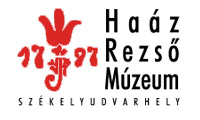Kovács Petronella (szerk.): Isis - Erdélyi magyar restaurátor füzetek 14. (Székelyudvarhely, 2014)
Mester Éva: Nagyméretű üvegfestmények "in situ" vagy műtermi restaurálása
to the boards only by gluing. Finally, it was stuck to the spine as a decoration, merely as a covering for the gatherings. In this way, its direct linkage to the boards ended. László Nemes Takách The materials and structures in ‘homemade’Nativity scenes, and some ethical and technical issues relating to their conservation Artefacts can be said to be ‘homemade’ when, during their creation, materials and techniques are employed freely, without regard to handicrafts or trade prescriptions and customs. Homemade Nativity scenes were, generally speaking, made by simple people or by trained craftsmen whose training was in another field. Work by trained craftsmen which is intended for sale can be recognised on account of the correct use of tools, the correct sizes of the parts, the making of joints, etc. The efforts of the hands of simple people speak of ad hoc selection of materials and inexact workmanship generally, but also of great love. The study deals with the different types of wooden and cardboard structures used in homemade Nativity scenes, and with the types of damage to them that are frequent. It lists the most important properties, from the conservation standpoint, of the paints decorating their surfaces, and also those of the various types of matt, waxed, and lacquered paper used to cover them. In addition, it presents those printing inks - silver, gold, copper, indigo, Prussian blue, and madder lake - used on this paper and on images of the protagonists which are sensitive to certain conservation treatments. The conservator often has to take artefacts apart. By so doing, he discovers what is inside and information which must be retained. For this reason, presenting and documenting the structure of an artefact, the way it was made, the decoration of its inner surfaces, and the decorative layers one on top of another are especially important, with the help of digital photographs and drawings also. The primary goal of every conservation intervention is the most complete preservation possible of the materials making up the artefact. In certain cases, saving the artefact may put pressure on this basic ethical rule. The author has conducted the conservation of 21 different Nativity scenes. The ethical problems arising in the conservation of two of these, both Nativity scenes featuring string puppets, are presented in the paper. Supplied with the inventory number 132230, the string-puppet Nativity scene from Tiszacsécse is covered using coloured, waxed paper stretched over a frame made from strips of wood. Paper star motifs have been stuck onto the inside surfaces of the covering paper. These provided a festive atmosphere; the Nativity scene was lit from within during the puppet performance. The artefact was seriously damaged during the Second World War. When it was conserved, the pinewood strips of the frame had to be repaired or replaced. In addition, the discoloured, fragile, and faded coloured paper had to be conserved. The colouring of the repairs to the incomplete, faded paper which covered large surfaces represented an ethical problem. In the end, the repairs were given the original colour of the paper surfaces and the original, faded paper remains were stuck back onto them. As a result of this, an authentic, if less aesthetically pleasing, exhibition artefact took shape which represents the artefact’s original function slightly. The string-puppet Nativity scene from Szatmárcsekei (inventory number: 68.120.24) is likewise an artefact which was damaged in the war. In this case, pieces of cardboard have been nailed onto a frame made of strips of wood. Different motifs have been cut out from the cardboard and then covered with coloured paper. During the puppet performance, a shining image of the coloured motifs illuminated from within could be seen. During conservation, after the fitting of new wooden strips to the frame and its strengthening from the statics standpoint, treatment of the cardboard covering took place. Paper that was faded, scorched, and fragile through acidification was, after mechanical cleaning and de-acidification, removed from the cardboard to which it had been stuck using flour-paste. This was done on a light table using a solution of amylase enzyme (Pankreoflat). Some of the paper covering was so faded that its one-time colour could only be identified in traces only. The discoloured paper was, therefore, not put back on the artefact; instead, it was included with the documentation. Acid-free paper painted with acrylic paint fitting the colour of the original and made glossy with acrylic lacquer was stuck to the surfaces of the cardboard nailed back onto the artefact. In this way, from the aesthetic point of view the artefact resembled the earlier one in appearance. The newly-made, good-quality paper covering enabled the Nativity scene to be exhibited - for a set period - in such a way that it would light up for a short time when a visitor approached it. Márta Kissné Bendefy The difficulties of saving and conserving archaeological finds made of leather Leather finds on the territory of Hungary come to light most often in locations where there is water (wells, castle moats, rivers, lakes) and in burial places (cemeteries, churches, crypts). Frequently, those recovered from the first group of places are incomplete, not connected with one another, and different in age. With leather artefacts found in burials the situation is different: we can expect them to belong together and to be similar in age; also, their identification is easier. In settlements, leather waste, too, can come to light, indicating the production of footwear in these places. In the majority of cases, finds are moist or waterlogged when they come to light; also, they are mostly in a weakened condition and are contaminated with soil remains, products of metallic corrosion, and products 143
